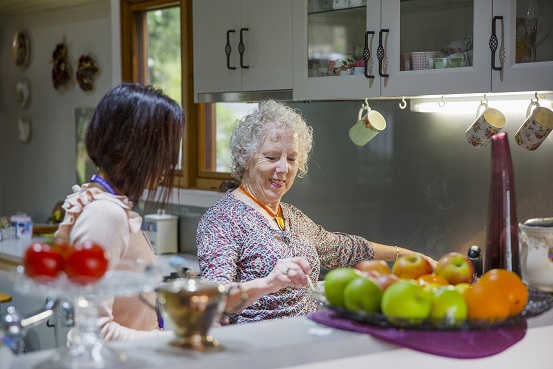For many older people remaining in their own home is a key part of maintaining their independence.
People who are blind or have low vision are likely to face increased challenges to remaining safe and comfortable in their own home as they grow older, however there are numerous strategies that can be put in place to support them with this.
While some people may require major modifications, others may only require smaller changes to help them stay in their own home. Read on for some examples from Vision Australia’s Occupational Therapy staff on how a home can be made more accessible.
The front door:
- Make sure any steps are easy to identify. Tactile features or contrasting colours can help people to recognise where steps are and can be installed relatively easily.
- If there are a number of steps it may be time to consider making larger changes such as the installation of hand rails and/or ramps to make coming and going easier.
The kitchen:
- Ensure there is adequate lighting. Strong general lighting can make a big difference for people who are blind or have low vision, while task-specific lighting can assist with using appliances, preparing ingredients or finding the right thing in a draw or cupboard.
- Use colour contrast to make sure cups, bowls, plates and other utensils can be easily identified. Replace clear items with coloured ones and ensure they don’t match their background.
- Consider making changes to your appliances. Tactile features can be an easy way to assist people in identifying controls or settings on appliances, while appliances like microwaves now come with speech output.
The living room:
- Make navigation easier. Arrange furniture such as lounges and coffee tables so there are clear walkways through the room.
- Rethink the rug. Rugs may tie a room together, but they can present a trip hazard. Either consider removing them or make sure they contrast strongly with the colour of the floor.
- Keep things organised. Dedicate a specific spot to store remotes and other easy to lose things.
The bathroom:
- Handrails can make showering or bathing safer, especially when it comes to entering and exiting the shower or bath. Some people may also like to use a shower chair so they are not required to stand for an extended period.
- Consider removing the bathtub: Having a shower over the bath may save some space, however it can pose a risk when it comes to stepping in and out.
For more information on how Vision Australia can help you stay in your own home, check out or website or get in touch by phone on 1300 84 74 66 or by email at [email protected].











